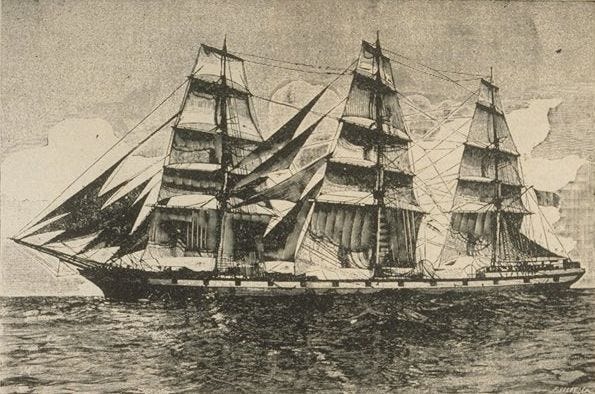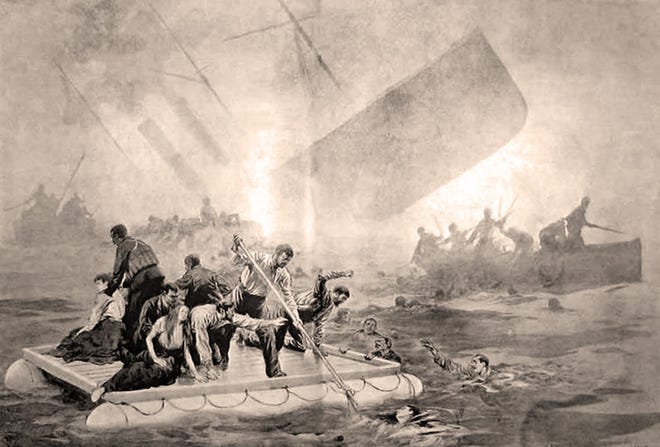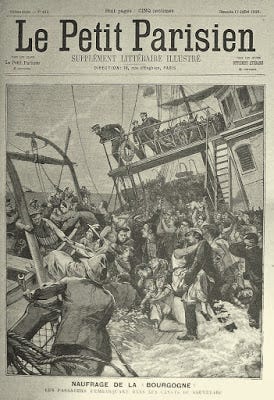Central Jersey's Hero of the Bourgogne
[Originally published 4 July 2010]
When Mrs. Victoire LaCasse, returning by train to New York after one of the most notorious maritime disasters of the 19th century, was asked by reporters how she came to be the only female survivor of the sinking of the French liner La Bourgogne, a tragedy that took the lives of 535 of the 700 aboard, she replied with one of the great lines in nautical history:
"Don't ask why I am the only woman who was saved, better to ask why my husband was the only man aboard who was man enough to save a woman".
 |
| New York Evening Telegram front page, 6 July 1898 |
In the pre-dawn hours of July 4th, 1898 aboard the passenger steamship La Bourgogne, Mrs. LaCasse thought she heard a sound and aroused her husband Adrian. A foreign language teacher in the Plainfield, New Jersey school system, Adrian and his wife had set sail for a summer vacation in his native France. The ship was making 17 or 18 knots through a dense fog 60 miles south of Sable Island, Nova Scotia, with the crew sounding the fog horn at intervals, and keeping watch through the night.
 |
| The French liner La Bourgogne, sailing from Le Havre to New York. |
But Mrs. LaCasse thought she heard something else, and wouldn't rest until Adrian went on deck to investigate. Before he left their second class cabin, he told his wife to put on a life vest.
 |
| The English three-masted iron-clad sailing ship HMS Cromartyshire. |
 |
| The La Bourgogne disaster as depicted in an 1898 engraving |
The Cromartyshire was badly damaged but survived the collision, sending out boats to pick up survivors. Another steamship, the Grecian, responded to the Cromartyshire's distress flares, and took the English ship in tow to Nova Scotia, where the survivors boarded another ship and returned to New York. At the port in New York, La Bourgogne crewmen were cursed and spat on - news of the tragedy having preceded their arrival. The LaCasses returned by train.
